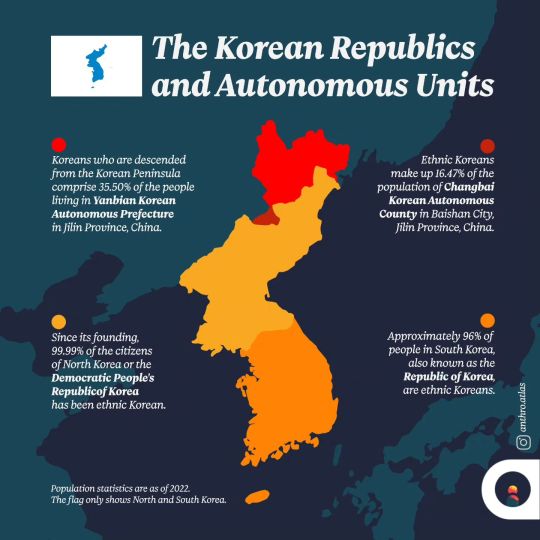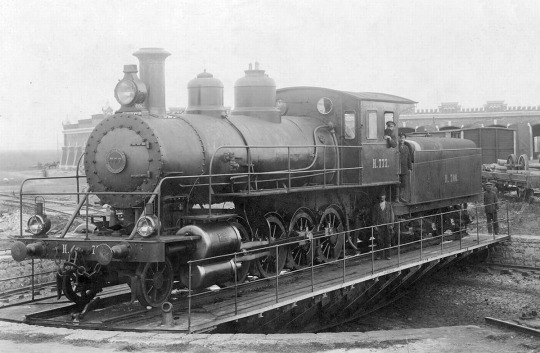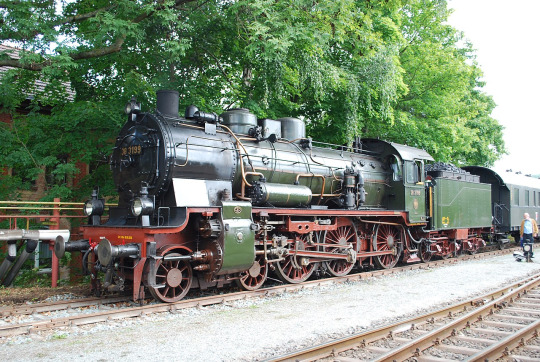#Jilin Province
Photo

A wild Siberian tiger in Tianqiaoling forest area in north-east China’s Jilin province. Footprints and other evidence of wild Siberian tigers have been found in the forest, the local forest bureau and public security bureau said on Monday
Photograph: Xinhua/Rex/Shutterstock
#xinhua#photographer#rex#shutterstock#siberian tiger#tiger#animal#mammal#wildlife#tianqiaoling forest area#china#jilin province#winter#nature
58 notes
·
View notes
Photo

MAD designs feather-like terminal for Changchun airport in China
A floating feather was the visual reference for the airport terminal that Chinese architecture studio MAD is designing in the city of Changchun, Jilin province, China.
Terminal 3 at Changchun Longjia International Airport will have a distinctive fan-shaped form, which is intended to resemble "a feather floating in the breeze".



#mad design#architecture#architectural design firm#feather-like terminal#changchun longjia international airport#jilin province#airport terminal#terminal 3#future architecture
10 notes
·
View notes
Text
youtube
New reports from Oceana have revealed that China is illegally fishing in other countries’ waters — here’s why this matters
Correction: The first imagery shown in the video is of carp found in China’s Jilin Province. This fish is found in lakes and is legal to catch. We regret this error.
#oceans #illegalfishing #Earth #Environment #ClimateCrisis #NowThis
#now this earth#now this#solarpunk#Tidalpunk#carp#China#Jilin Province#Oceana#ocean#sea#fish#fishing#illegal fishing#over fishing#ecosystem#environment#marine life#Youtube
7 notes
·
View notes
Text
MAD Unveil a Floating Feather Design for Changchun ‘Longjia’ International Airport

MAD Architects in collaboration with China Airport Planning & Design Institute and Beijing Institute of Architectural Design has revealed design for the Changchun “Longjia” International Airport Terminal 3 in China.
The plans have been reevaled following an international competition in China. The new terminal building, which will be the airport's first large-scale air transportation junction, will cover a total of nearly 270,000 square meters on a footprint of 177.6-hectare area.
Resembling "a floating feather", the precise shape of the airport features a fluid skin that frames its internal logic and roof design in a clear arrangement.
1 note
·
View note
Photo

The Four Koreas
by anthro.atlas
With ethnic Koreans making up 99.99% of the population in North Korea and 95.63% in South Korea, these two countries are among the most homogeneous in the world. Outside these republics, however, there are two political entities where a substantial Korean population resides. These are Yanbian Korean Autonomous Prefecture and Changbai Korean Autonomous County, both in China’s Jilin Province. Majority of the Koreans residing in Yanbian, in contrast to those in Changbai and the Korean republics, are descended from migrants who left the Korean Peninsula in large numbers throughout the 19th and 20th centuries.
Sources: National Bureau of Statistics of the People’s Republic of China & National Bureau of Statistics (South Korea)
107 notes
·
View notes
Text
Random Trains I Found Part 1:
So, I've put off writing my myriad of WIPs for a bit to spend some time just... looking at trains. Reconnecting with them. Hunting out ideas for the future and being amazed by the past. And here's a few of my absolute favourite random, insane trains I've found so far:
NGR Class D1:

This right here was the first 4-8-2 ever built - and it's an absolutely massive tank engine from South Africa. It was built to the 3ft 6in Cape Gauge and it began running in 1888. Take a moment for that to settle in - 1888. The USA didn't run a 4-8-2 on it's network until 1911, a good 20+ years later!
Russian Class Kh:

It's a 2-8-0 class built in the USA for Russia that had examples sold to Japan with the last example preserved in China. I personally like these engines because they really do tell us so much about how much the world changed - they began life in 1895, and somehow (I would love to know how if anyone has any information) one ended up in a river in Jilin Province, China. It was probably WWII, but all the same, these engines went places!
Prussian P8 Class:

These engines started life in 1908 and weren't retired until 1981 in Poland at the latest - and if that isn't an opening to an epic class of locomotive, I don't know what is! Roughly 3900 of these machines were built, making it potentially the single largest class of passenger engine in the world and they ended up just about everywhere in Europe, from France to Norway to Romania, where a number (200) were built under license. And the reason they lived so long? They were simple, strong machines.
GWR 2600 'Aberdare' Class:

Honestly, I just like these because they look so odd. Like, these are GWR 2-6-0s that look like a City or a Bulldog class. They have the double frames and the coupling rods of a 4-4-0 - and that's because they were introduced in 1900. They did manage to make it to 1949 hauling coal trains, but the GWR had already been withdrawing them in the 1930s, as they did with their older stock. I wish one had been preserved, they'd be so cool to look at!
NGR Class C:

Last but certainly not least, these behemoths of South Africa once again prove that somehow, the former Cape Colony was at the forefront of wheel arrangement innovation. It's a 4-10-2T. It was built in 1899, alongside the GWR Bulldog class! These things were massive... and eventually rebuilt to 4-8-2T locomotives. But there were 137 of them built, making them the most numerous of the 4-10-2 type locomotive ever constructed.
I want all of these engines. I would love to know more about them, I would love to own one (in model form) and I am going to love continuing my journey through railway history to find more random, interesting locomotives to share.
And as usual, all images belong to their respective owners.
#weirdowithaquill#railways#real railway stuff#real world trains#South African Railways#Prussian P8 locomotive#Russian Kh locomotive#gwr#Aberdare Class#real trains are so cool#And leaving my UK-centric railway view to explore is a lot of fun!#random railways#random thoughts
23 notes
·
View notes
Text


❄️ Birthday cheers from Rei's personal fans ❄️
"I want your name to shine in every city.
May you receive many blessings. ♥️
📍🇨🇳 Changchun City Subway Line 1, Jilin Province
☃️ : August 19th to September 7th 1,500 electronic information display screens on all tracks Number of views: 200 times per day
📍 Taxi in Changchun, Jilin Province
☃️ :September 5th, 10,000 taxis in the city. Views: 100 per day
📍 Jilin City Taxi in Jilin Province
☃️ : September 5th, 5,000 taxis in the city. Views: 100 per day
❄️ Planning & Advertiser: Shusen
❄️ Subway photo provided by: Moi Yi
#love and deepspace#love & deepspace#lads#lnds#l&ds#birthday events#;offline events#;fan organized#zayne#rei#li shen#lee seoeon#love and deepspace zayne#黎深#レイ#이서언#lads zayne#lnds zayne#l&ds zayne#zayne l&ds#zayne lads#zayne lnds#zayne love and deepspace#china 🇨🇳
11 notes
·
View notes
Text

Japanese scientists part of Unit 731 hose down a Chinese test subject to prevent the germ weapons they've infected him with from spreading. Jilin Province, China, Nov. 1940.
29 notes
·
View notes
Text
Changchunsaurus parvus

Changchunsaurus was a genus of neornithischian dinosaur from the Cretaceous period. Its type species is Changchunsaurus parvus. The only specimen was found in the Quantou Formation of the Songliao Basin in 2005. It is the first dinosaur found in the Jilin province of China.
Its autapomorphies include a slit-like incisive foramen present on the midline of the premaxillary palate, medial to crowns three and four, with foramen positioned lateral to it on each side; a thickened and slightly rugose dorsolateral surface of the dentary, continuous to the predentary; and a groove extending rostromedially along the lateral surface of the caudal half of the dentary and onto the medial surface of the coronoid process.
It is not exactly known where Changchunsaurus sits amongst other neornithischians, but it has been found to be closely related to Jeholosaurus and Haya. It is known from the holotype that includes the skull, the axial column as far as the cranial end of the sacrum, and partial forelimbs and hind limbs. Only the skull is described in its original paper. It may also be known from additional material found in the Quantou Formation, some of which was described and referred to the genus in 2010.
Original paper: Zan Shu-Qin; Chen Jun; Jin Li-Yong; Li Tao (2005). "A primitive ornithopod from the Early Cretaceous Quantou Formation of Central Jilin, China". Vertebrata PalAsiatica (in Chinese and English). 43 (3): 182–193.
Referred specimen paper: Jin Liyong; Chen Jun; Zan Shu-Qin; Richard J. Butler & Pascal Godefroit (2010). "Cranial anatomy of the small ornithischian dinosaur Changchunsaurus parvus from the Quantou Formation (Cretaceous: Aptian–Cenomanian) of Jilin Province, northeastern China". Journal of Vertebrate Paleontology. 30 (1): 196–214. doi:10.1080/02724630903412372
Wikipedia article: https://en.m.wikipedia.org/wiki/Changchunsaurus
#dinosaur#paleoart#paleontology#artwork#original art#changchunsaurus#neornithischia#obscure fossil animals#obscure fossil dinosaurs#obscure fossil tetrapods
29 notes
·
View notes
Text
Xi Jinping, male, Han ethnicity, was born in June 1953 and is from Fuping, Shaanxi Province.
Li Qiang, male, Han ethnicity, was born in July 1959 and is from Ruian, Zhejiang Province.
Zhao Leji, male, Han ethnicity, was born in March 1957 and is from Xi'an, Shaanxi Province.
Wang Huning, male, Han ethnicity, was born in October 1955 and is from Laizhou, Shandong Province.
Cai Qi, male, Han ethnicity, was born in December 1955 and is from Youxi, Fujian Province.
Ding Xuexiang, male, Han ethnicity, was born in September 1962 and is from Nantong, Jiangsu Province.
Li Xi, male, Han ethnicity, was born in October 1956 and is from Liangdang, Gansu Province.
Ma Xingrui, male, Han ethnicity, was born in October 1959 and is from Yuncheng, Shandong Province.
Wang Yi, male, Han ethnicity, was born in October 1953 and is from Beijing.
Yin Li, male, Han ethnicity, was born in August 1962 and is from Linyi, Shandong Province.
Shi Taifeng, male, Han ethnicity, was born in September 1956 and is from Yushe, Shanxi Province.
Liu Guozhong, male, Han ethnicity, was born in July 1962 and is from Wangkui, Heilongjiang Province.
Li Ganjie, male, Han ethnicity, was born in November 1964 and is from Changsha, Hunan Province.
Li Shulei, male, Han ethnicity, was born in January 1964 and is from Yuanyang, Henan Province.
Li Hongzhong, male, Han ethnicity, was born in August 1956 and is from Changle, Shandong Province.
He Weidong, male, Han ethnicity, was born in May 1957 and is from Dongtai, Jiangsu Province.
He Lifeng, male, Han ethnicity, was born in February 1955 and is from Xingning, Guangdong Province.
Zhang Youxia, male, Han ethnicity, was born in July 1950 and is from Weinan, Shaanxi Province.
Zhang Guoqing, male, Han ethnicity, was born in August 1964 and is from Luoshan, Henan Province.
Chen Wenqing, male, Han ethnicity, was born in January 1960 and is from Renshou, Sichuan Province.
Chen Jining, male, Han ethnicity, was born in February 1964 and is from Lishu, Jilin Province.
Chen Min'er, male, Han ethnicity, was born in September 1960 and is from Zhuji, Zhejiang Province.
Yuan Jiajun, male, Han ethnicity, was born in September 1962 and is from Tonghua, Jilin Province.
Huang Kunming, male, Han ethnicity, was born in November 1956 and is from Shanghang, Fujian Province.
Liu Jinguo, male, Han ethnicity, was born in April 1955 and is from Changli, Hebei Province.
Wang Xiaohong, male, Han ethnicity, was born in July 1957 and is from Fuzhou, Fujian Province.
diversity win: the members of the CPC leading bodies range in age from 57 to 72 and come from a variety of provinces!
22 notes
·
View notes
Text










Glass Bridge (Piyan Mountain Scenic Spot, Longjing, Yanbian Korean Autonomous Prefecture, Jilin Province)
-host
2 notes
·
View notes
Text








The Great Wall is a military fortification in ancient China. It is a tall, solid and continuous wall to limit the movement of the enemy. The Great Wall is not a simple isolated city wall, but a defensive system with the city wall as the main body and a large number of cities, barriers, pavilions and landmarks.
The history of the construction of the Great Wall can be traced back to the Western Zhou Dynasty. The famous allusion "The Beacon Fire Plays the Marquis", which took place in the capital, Haojing (today's Xi'an, Shaanxi), originated here. During the Spring and Autumn Period and the Warring States Period, the Great Wall construction entered the first climax, but the length of construction was relatively short. After Qin destroyed the six countries and unified the world, the First Emperor of Qin connected and repaired the Great Wall of the Warring States, which was called the Great Wall. The Ming Dynasty was the last dynasty to overhaul the Great Wall. Most of the Great Wall people saw was built at this time.
The Great Wall resources are mainly distributed in 15 provinces, autonomous regions and municipalities directly under the Central Government, including Hebei, Beijing, Tianjin, Shanxi, Shaanxi, Gansu, Inner Mongolia, Heilongjiang, Jilin, Liaoning, Shandong, Henan, Qinghai, Ningxia and Xinjiang. It is more than 2000 kilometers long in Hebei Province and 1838 kilometers long in Shaanxi Province. According to the national survey of the Great Wall resources by the cultural relics and surveying and mapping department, the total length of the Great Wall in the Ming Dynasty is 8851.8 kilometers, and the Great Wall in the Qin and Han Dynasties and the early period is more than 10000 kilometers, with a total length of more than 21000 kilometers. The existing cultural relics of the Great Wall include the walls, trenches, boundary trenches, individual buildings, fortresses, related facilities and other relics of the Great Wall, totaling more than 43000 (pieces/section).
On March 4, 1961, the Great Wall was announced by the State Council as the first batch of national key cultural relics protection units. In December 1987, the Great Wall was listed as a world cultural heritage. On November 26, 2020, the State Administration of Cultural Relics released the first batch of state-level important sites and sections of the Great Wall.
2 notes
·
View notes
Text
Comprehensive Guide for Indian MBBS Aspirants: Food and Hostel Facilities at Top Medical Universities in China
Dear Indian MBBS aspirants are you planning for pursuing MBBS in China?
If so, you are going to experience a bright MBBS career in your future.
Ria Overseas have already provide you with much information about MBBS in China, reasons to join, eligibility, intake time, document required, job opportunity, course duration, internship program, admission procedure and many more.
Here our focus is on the availability of food and hostel facilities for Indian students in some top medical universities in China.
Jilin Medical University
· Founded in 1946, the University has built a good reputation throughout the years.
· The institution now has around 1,400 international students.
· The University is ranked among China's top 10 MBBS institutions.
· The institution also works with prestigious universities in Japan, the United Kingdom, Canada, Hong Kong, and America.
· Accommodation Facilities: Available
· There are two types of rooms: single and double.
· There is also a separate kitchen, gymnasium, computer café, reading rooms, cultural centre, and sports arena.
· Hostel fees: INR 65,000 year
Nanjing Medical University
· Nanjing University is regarded as one of China's leading medical institutions.
· It provides high-quality six-year courses in a variety of fields.
· Currently, the institution has more than 23 associated hospitals.
· It is one of the most popular colleges in both its province and the entire country.
· Accommodation Facilities: Available
· There are three room types: single, double, and triple.
· Additional amenities include nearby retail malls, two-wheeler facilities, grocery stores, dry cleaners, post office, gym, and sports arena.
· Hostel Fee: INR 66,500 per year
Guangzhou Medical University
· It is one of China's top institutions, supervised by the Ministry of Education.
· Guangzhou Medical University is a top public university in China.
· It provides a wide range of courses in many specialities.
· The University oversees eight associated hospitals as well as several educational centres.
· Accommodation Facilities: Available
· Number of rooms: Two types: single and double.
· Additional facilities include separate playgrounds for various sports.
· Hostel Fee: INR 63,000 per year
Fujian Medical University
· Fujian Medical University is one of China's most prominent institutions.
· It was founded in 1937 and is one of China's oldest medical colleges.
· Fujian is home to about 12,000 undergraduates, 2,800 graduates, and 250 Ph.D. students.
· The university includes around 1,500 academic faculty and 24 teaching hospitals.
· Accommodation facilities are available.
· There are two types of rooms: single and double.
· Additional facilities include a café, sports clubs, a gymnasium, and relaxation centres.
· The hostel fee is INR 40,000 per year.
Jiangsu University
· Jiangsu University is a top comprehensive university in China.
It provides high-quality education programs in a variety of medical specialities.
· The university has a state rating of 61 and is ranked among the top 300 institutions in Asia.
· Accommodation facilities are available.
· Number of rooms: Three types: single, double, and triple.
· Additional amenities include indoor and outdoor swimming pools, a study room, a gym, sports courts, and labs.
· The hostel charge is INR 64,000 per year.
Keep exploring our website to know about food and hostel facilities available in some other medical universities in China.
0 notes
Text
Monday 16th September 2024, Jilin, 7.01am.
#181,822 — A widow’s long quest for justice in Indonesia: in a conference room of the national police headquarters here, Patsy Spier once again relived the attack that robbed her of her husband on a Saturday afternoon in 2002 in the remote Papua province. She will try to impress the values of democracy into the absolutist mind of the heir. Maybe she is one of them now.
0 notes
Text
Driverless vehicles to lift battery swapping

Visitors check out NIO charging piles during an international automobile expo in Changchun, Jilin province, in July. The company aims to build 1,000 battery swapping stations in China in 2023, bringing the total number to 2,300 by this year-end.
A boom in autonomous vehicles is expected to usher in fresh development opportunities for the battery swapping sector in China, throwing open a billion-dollar market in energy storage.
In May, Baidu unveiled its sixth-generation robotaxi services in Wuhan, Hubei province, with the autonomous vehicles operating using a battery swapping system, utilizing standardized battery packs and smart battery swapping stations from a subsidiary of GCL Energy Technology Co Ltd.
Each vehicle autonomously schedules visits to these stations based on service status, location data, and battery levels, completing a rapid battery swap upon arrival to maximize operational efficiency.
The rapid commercialization and deployment of autonomous ride-hailing and taxi services are expected to drive demand for battery swapping, CITIC Securities said in a report.
This method offers advantages such as unmanned operation, high efficiency and lower costs from reduced human workforce, and is particularly suited for fixed routes and scenarios without human intervention.
CITIC Securities has forecast that the number of battery swapping stations will reach 27,500 by 2026, with a compound annual growth rate of 93 percent from 2022 to 2026, and the market size for battery swapping equipment is expected to reach 30.5 billion yuan ($4.2 billion).
Baidu said the decision to use battery swapping for its robotaxis stemmed from its full automation compared to the manual handling required for battery charging services, resulting in savings on labor costs.
Additionally, while recharging via a charging pole takes at least half an hour, swapping a battery only takes three minutes, saving valuable time that can be devoted to better driving services, thereby enhancing operational efficiency.
Lu Jiamin, chief automotive analyst at Cinda Securities, said: "Baidu's latest sixth-generation robotaxi has reduced vehicle costs by 60 percent compared to the fifth generation. Operating and service costs have also fallen by 30 percent and 80 percent, respectively."
Robotaxi operation service platform Ontime has estimated that a robotaxi's cost per kilometer will undercut human-driven ride-hailing services by 2026, signaling a gradual mainstreaming of robotaxi services.
Baidu hopes to achieve financial balance in Wuhan by the end of 2024 and overall profitability by 2025 for its robotaxi services.
Against this backdrop, key players in the driving and battery charging/swapping sectors have stepped up collaboration to tap the surging market.
Baidu has collaborated with GCL Energy Technology's subsidiary for battery packs and swapping stations. Shandong Weida Machinery supplies swapping station equipment and services to NIO. CATL has partnered with automobile makers and ride-hailing services such as JAC Group, Didi and BAIC Motor in the battery swapping field. Automobile companies such as the SAIC Motor and Geely have also made significant strides in this domain.
CITIC Securities anticipates robust growth of the battery swapping sector, driven by proactive efforts throughout the supply chain and promising prospects for battery swapping in taxis and heavy vehicles.
We are thrilled to extend a warm welcome to the China Scientist Awards!
Join us for the China Scientist Awards, a premier event in the realm of research. Whether you're joining virtually from anywhere in the world, this is your invitation to explore and innovate in the field of research. Become part of a global community of researchers, scientists, and professionals passionate about advancing research.
visit: chinascientist.net
Nomination Link: https://x-i.me/chinom
Registration Linkhttps://x-i.me/chireg
For inquiries, contact us at [email protected]
-------------------------------------
Other website:
https://www.instagram.com/cs_chenguang/
#chinaresearch#scienceawards#chinainnovationaward#breakthroughresearch#chinastemawards#researchrecognition#awardwinningscience#chinascienceleaders#chinatechinnovators#chinascientistaward
0 notes